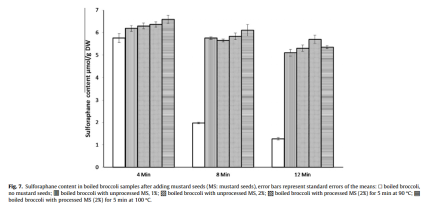I recently heard centenarian Bernando Lapallo say that he boils his drinking water (http://www.abc15.com/news/local-news/water-cooler/valley-man-celebrates-114th-birthday-shares-his-longevity-secrets). Whether this is a contributor to or is merely associated with his longevity is debatable. What will boiling your water do, prior to drinking it, and is it worth the effort?
The ability of our immune system to combat infectious agents decreases with age (Ginaldi et al. 2001). Can we counteract this? Reducing intake of infectious agents would reduce the burden that our immune systems would have to deal with. Is it possible to reduce intake of infectious agents, including bacteria, viruses, and protozoa?
Boiling water can inactivate a variety of bacteria, viruses, and protozoa (WHO, 2015) that are increased in older adults. For example, as shown below, a water temperature greater than 60C (water boils at 100C) for 5 minutes will inactivate Escherichia Coli (E. coli). Why are E. coli important? E. Coli are elevated in older adults (70-90y), when compared with young (20-50y; Enck et al. 2009), and are associated with insulin resistance (Vrieze et al. 2012) and frailty (Claesson et al. 2012). Below we see that boiling water for 5 minutes would thermally inactivate E. Coli, potentially resulting in decreased work for our immune system.
Every morning I boil ~40 oz of water for my green tea. Later in the day in drink 10-20 oz of water, but not boiled. So, ~2/3 of my water intake is boiled, potentially reducing the infectious burden that my immune system has to battle. Whether boiling water reduces this burden by 1%, 10%, or more is unknown. However, based on the ability of water boiling to inactivate pathogens that are increased during aging, it may be a low risk (only the time used!), high reward strategy for improving health during aging. I’m actively considering boiling my 10-20 oz. of water at night, too.
7/2017 Update: In addition to boiling my water for green tea, I also use a high-powered water filter, the Big Berkey. I’m not paid to say that, but that’s what I do!
If you’re interested, please have a look at my book!
Reference:
Claesson MJ, Jeffery IB, Conde S, Power SE, O’Connor EM, Cusack S, Harris HM, Coakley M, Lakshminarayanan B, O’Sullivan O, Fitzgerald GF, Deane J, O’Connor M, Harnedy N, O’Connor K, O’Mahony D, van Sinderen D, Wallace M, Brennan L, Stanton C, Marchesi JR, Fitzgerald AP, Shanahan F, Hill C, Ross RP, O’Toole PW. Gut microbiota composition correlates with diet and health in the elderly. Nature, 2012. 488(7410): p. 178‐84.
Ginaldi L, Loreto MF, Corsi MP, Modesti M, De Martinis M. Immunosenescence and infectious diseases. Microbes Infect. 2001 Aug;3(10):851-7.
Enck P, Zimmermann K, Rusch K, Schwiertz A, Klosterhalfen S, Frick JS. The effects of ageing on the colonic bacterial microflora in adults. Z Gastroenterol, 2009. 47(7): p. 653‐8.
Vrieze A, Van Nood E, Holleman F, Salojärvi J, Kootte RS, Bartelsman JF, Dallinga-Thie GM, Ackermans MT, Serlie MJ, Oozeer R, Derrien M, Druesne A, Van Hylckama Vlieg JE, Bloks VW, Groen AK, Heilig HG, Zoetendal EG, Stroes ES, de Vos WM, Hoekstra JB, Nieuwdorp M. Transfer of intestinal microbiota from lean donors increases insulin sensitivity in individuals with metabolic syndrome. Gastroenterology, 2012. 143(4): p. 913‐6 e7.
World Health Organization. Boil Water. January 2015. http://www.who.int/water_sanitation_health/dwq/Boiling_water_01_15.pdf


